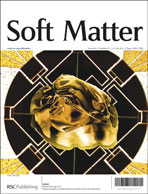In this study, we report the application of a biocompatible thermo-reversible hydrogel, made from thermo-sensitive poly(N-isopropylacrylamide-co-acrylic acid) (P(NIPAM-AA)) microgels, for expanding stem cells in three-dimensions (3-D). The P(NIPAM-AA) microgels were synthesized by emulsion polymerization with their thermo-responsive phase transition behaviors being examined by light scattering and rheological methods. The viability of the microgel-exposed C3H/10T1/2 cells compared to the control cells is close to 100%, indicating the non-cytotoxicity of the synthesized microgels. At 37 °C, rheological measurements reveal the formation of hydrogels from 30 mg mL−1 microgel dispersions. The cross-sectional morphologies of the hydrogels show the interconnected porous structure. The 3-D stem cell culture system can be achieved by heating the microgel and cell mixtures to 37 °C. The increase of the viable stem cells cultured suggests that the in situ formed hydrogels support stem cell proliferation. The recovery of the 3-D cultured stem cells can be easily accomplished by cooling the culture system to room temperature. The released 3-D cultured cells can further adhere to a 2-D substrate, implying that the cultured stem cells are not only alive, but also retain the capability of migration. Therefore, the in situ formed thermo-reversible P(NIPAM-AA) hydrogels can be employed to expand stem cells in 3-D for further applications in tissue engineering.

You have access to this article
 Please wait while we load your content...
Something went wrong. Try again?
Please wait while we load your content...
Something went wrong. Try again?


 Please wait while we load your content...
Please wait while we load your content...